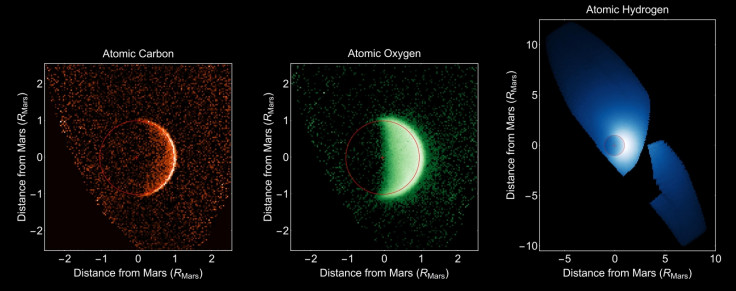Nasa's Maven Spacecraft Beams First Complete Picture Of Martian Atmosphere

Nasa's Maven spacecraft orbiting Mars has braved its first storm on the planet and beamed home images of oxygen, hydrogen, and carbon coronas surrounding the Red Planet. It also provided a map of the variable ozone in the atmosphere underlying the coronas.
This is the most complete picture of the extended Martian upper atmosphere ever made, says Nasa.
The hydrogen and oxygen atoms in the planet's upper atmosphere are believed to have been part of carbon dioxide or water on the surface.
From the upper atmosphere they gradually escape to space, in a process that proves how the weak gravity of Mars has not been able to retain its atmosphere.
Maven observed the edges of the atmosphere using the Imaging Ultraviolet Spectrograph (IUVS), which picks the sunlight reflected by these atoms. It created a map of ozone on Mars by detecting the absorption of ultraviolet sunlight by the molecules.
Tracking the ozone allows scientists to study the photochemical processes taking place in the Martian atmosphere. This is one of Maven's primary science mission.
Maven entered Mars orbit this September 21, and is now lowering its orbit and testing its instruments.
"All the instruments are showing data quality that is better than anticipated at this early stage of the mission," said Bruce Jakosky, Maven principal investigator at the University of Colorado, Boulder.
"All instruments have now been turned on -- although not yet fully checked out -- and are functioning nominally."
A solar flare on September 26 produced a CME that was also observed by Maven's Solar Energetic Particle instrument three days later.
It is expected to study the atmosphere's response to the energetic particles, comprising mostly protons, as they deposit their energy. Such solar events happen twice a month.
© Copyright IBTimes 2025. All rights reserved.





















